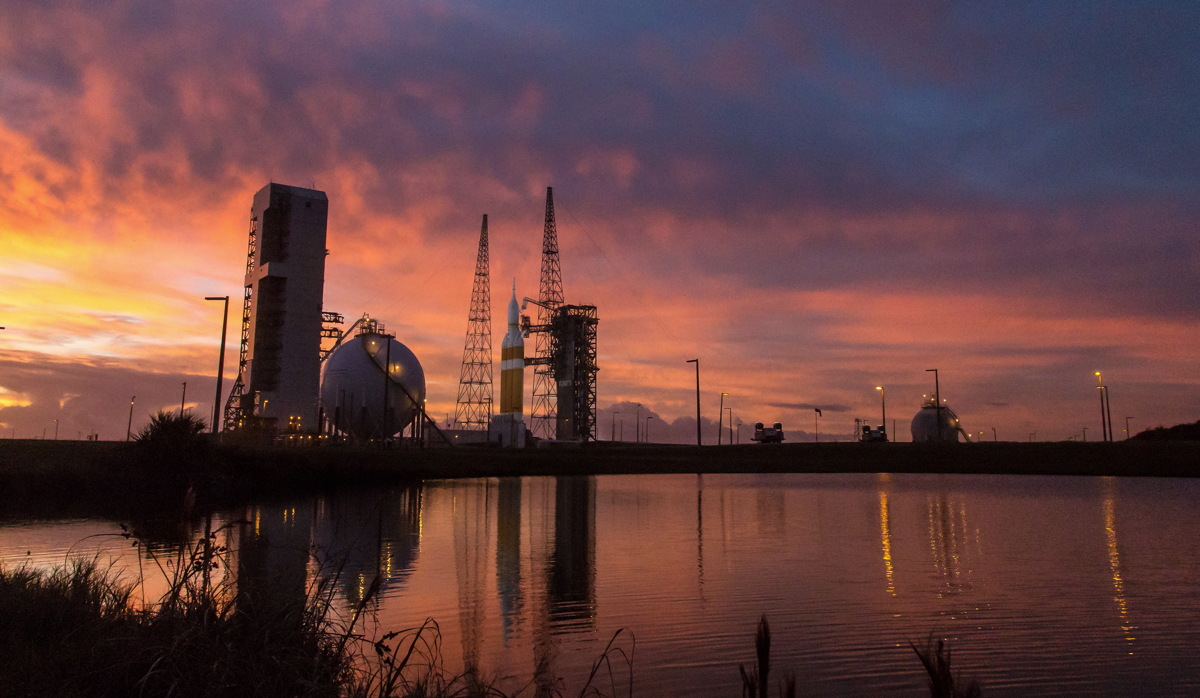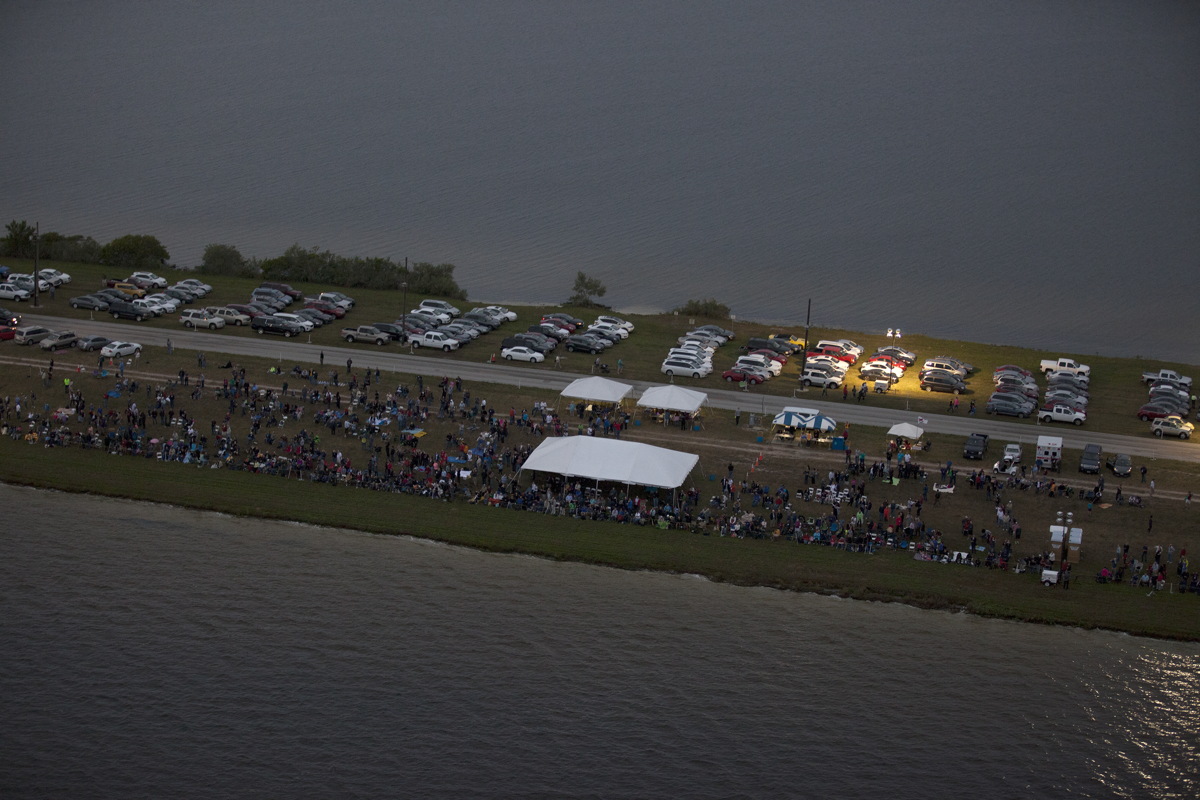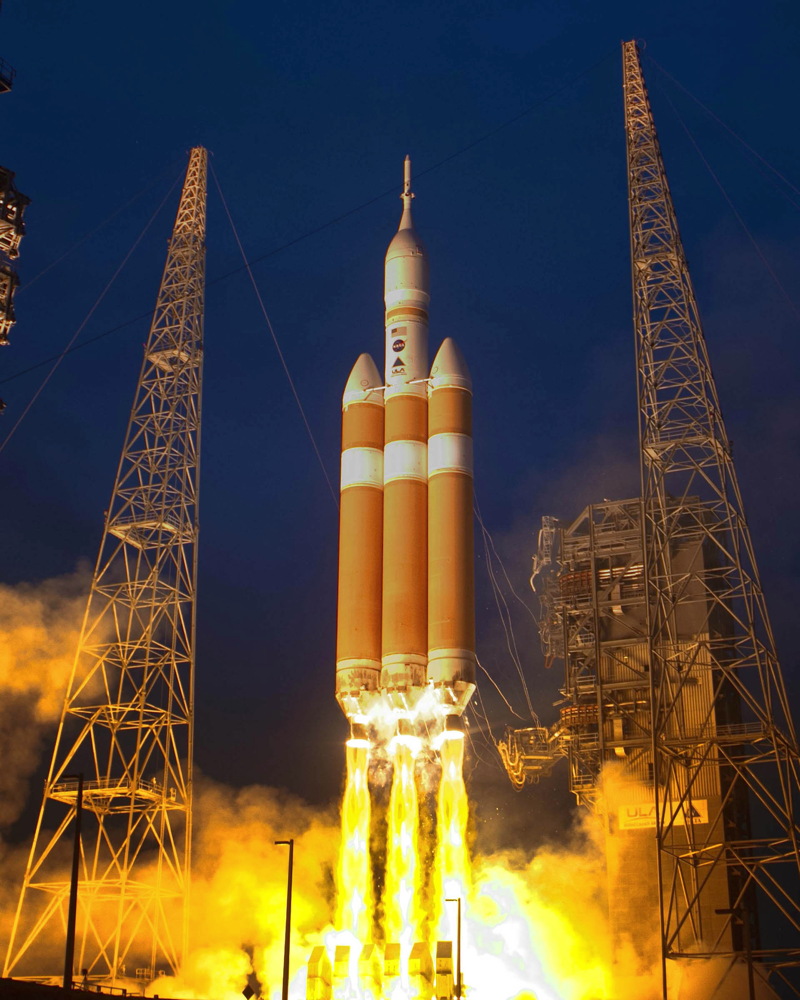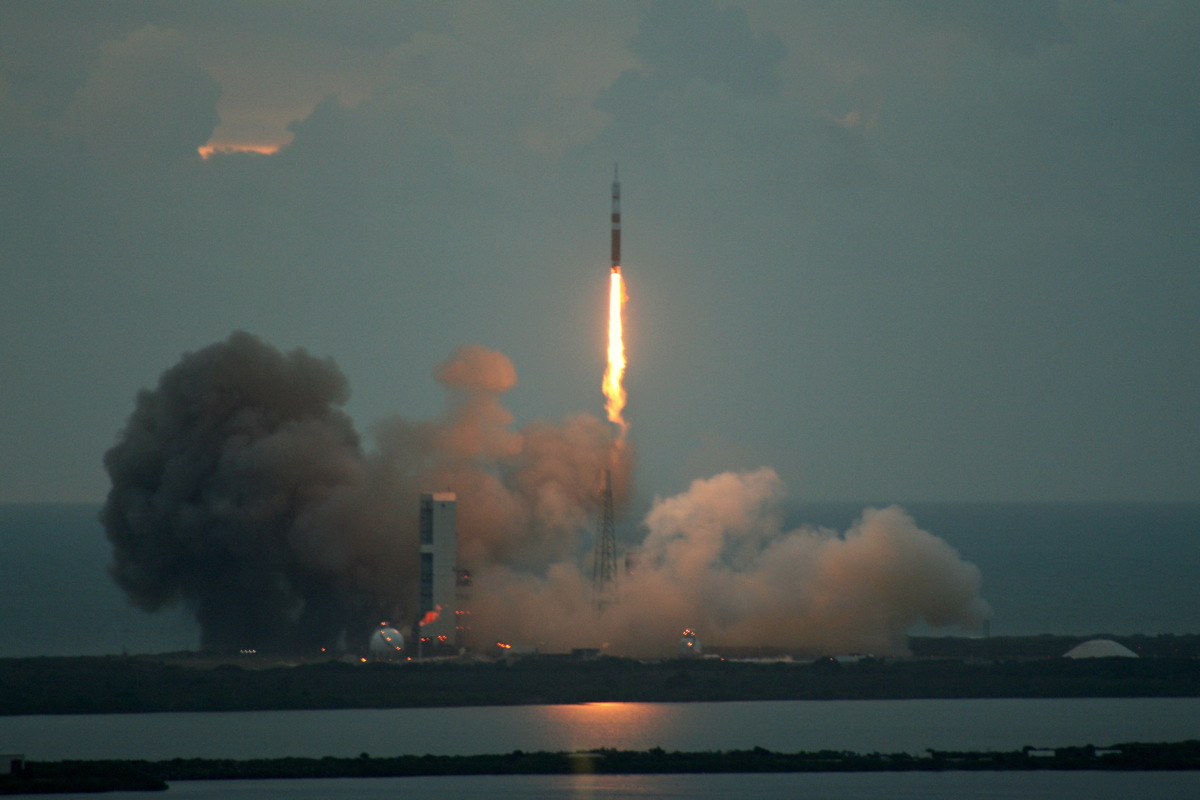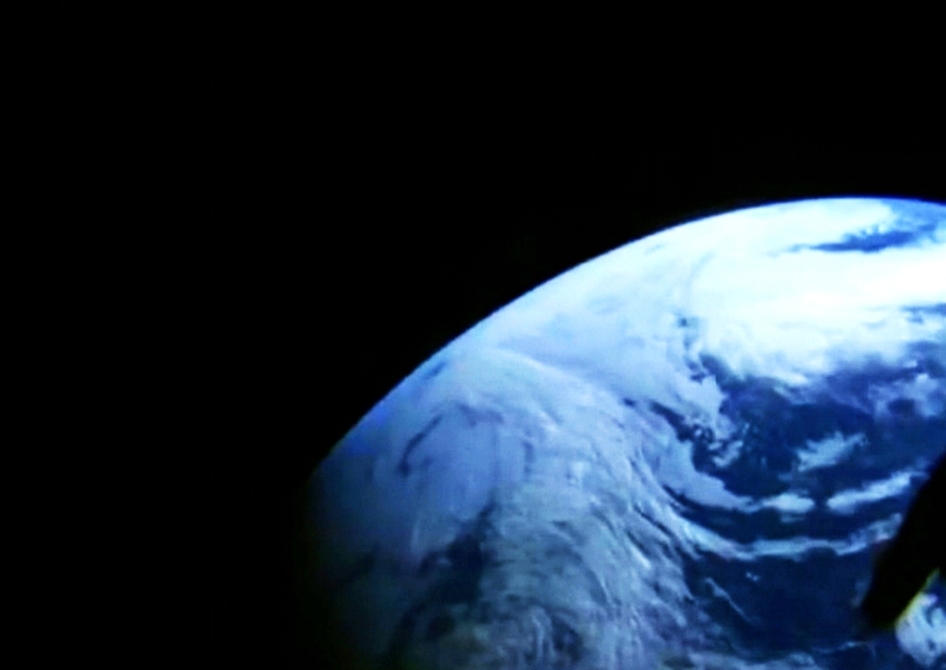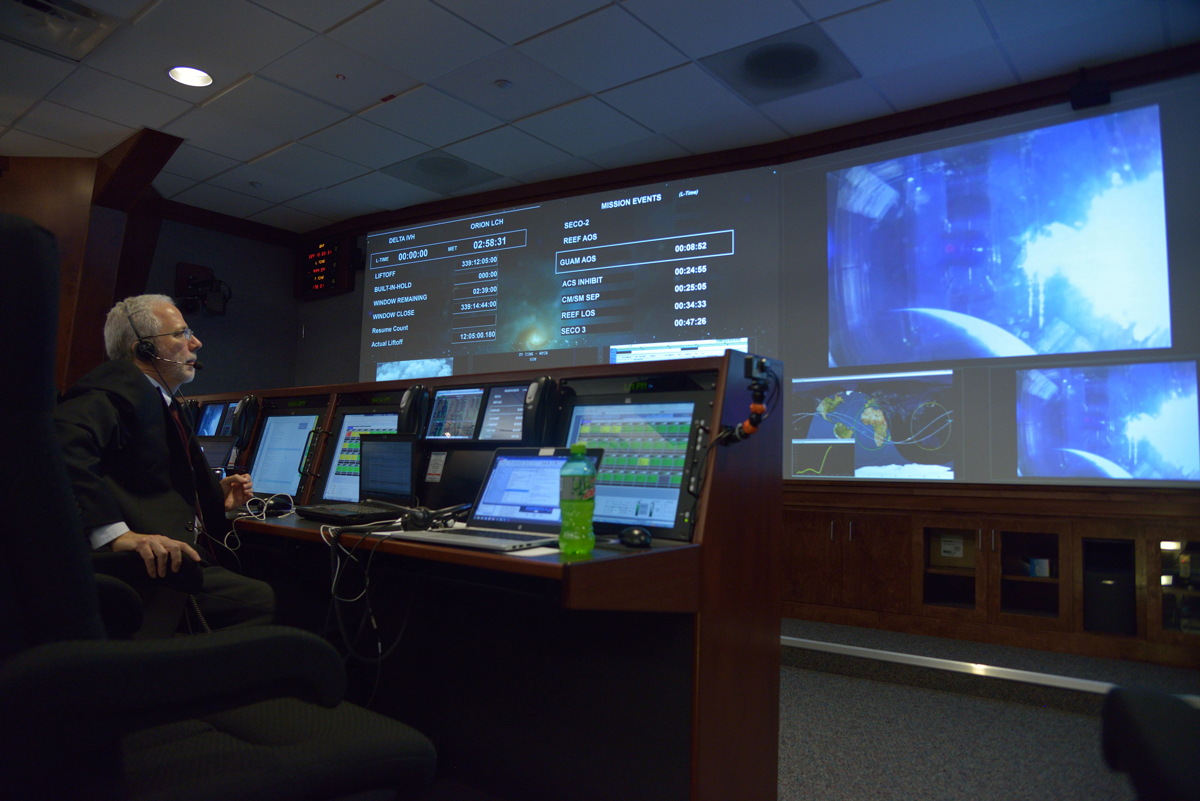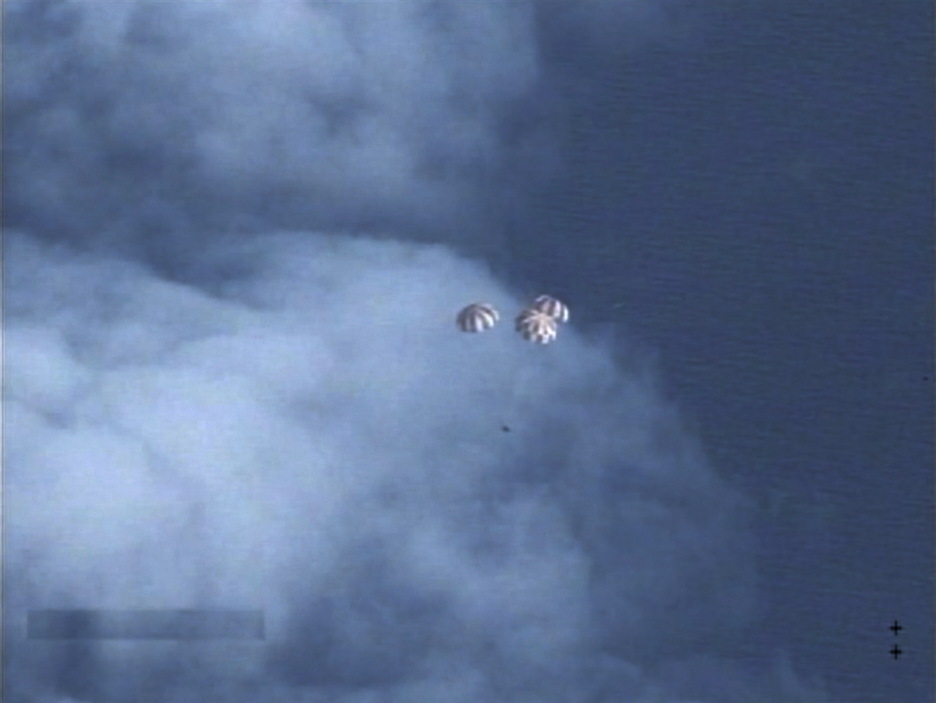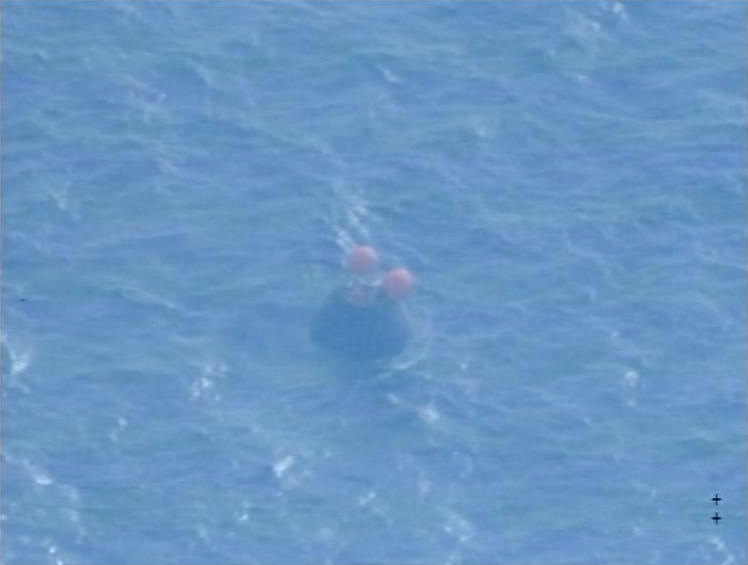These Photos from NASA's Orion Spaceship Test Flight Are Simply Awesome
From blastoff to splashdown, the historic test flight of NASA's first Orion spacecraft wowed experts and onlookers alike today (Dec. 5) with a nearly flawless mission that boldy went where no crew-rated spacecraft has gone in the last 42 years. And now, we have the photos to prove it.
NASA's Orion space capsule, which will one day carry humans to deep-space destinations, made its launch debut today by riding a massive Delta 4 Heavy rocket into orbit from a pad at the Cape Canaveral Air Force Station in Florida at 7:05 a.m. EST (1205 GMT). Spectacular NASA photos of Orion's test flight captured not only the launch, but also the spacecraft's view of Earth from a distance of 3,600 miles out in space, and even the view out the window as the spacecraft made its fiery descent back to Earth. Scroll down to see some of our favorite views from the Orion test flight, starting at the beginning, with a truly spectacular sunrise:
Orion's test flight day began with this amazing sunrise over Space Complex 37 at the Cape Canaveral Air Force Station, where Orion and its Delta 4 Heavy rocket stand ready for liftoff later in the morning. Veteran NASA photographer Bill Ingalls captured the peaceful scene. The aerospace company Lockheed Martin built Orion for NASA and oversaw the Friday test flight. The United Launch Alliance, a collaborative launch provider effort by Lockheed and Boeing, built the Delta 4 Heavy rocket. After high winds, a testy valve and a stray boat delayed a first launch attempt on Thursday (Dec. 4), NASA prepared once again to send Orion into space.
NASA photographer Kim Shiflett rode a helicopter to help capture this view of just one of many crowds of spectators lining the beaches and viewing areas along Florida's Space Coast to catch a glimpse of Orion's first launch. NASA was expecting nearly 27,000 spectators in the Kennedy Space Center area alone for the test flight's launch. Here, the crowd is gathered on the NASA Causeway connecting the Kennedy Space Center with the Cape Canaveral Air Force Station, where Orion's Delta 4 Heavy launched from.
The Orion spacecraft knows how to make an exit. With a brilliant burst of light and smoke, Delta 4 Heavy rocket launches Orion into space from Cape Canaveral Air Force Station in this view provided by the United Launch Alliance. With its three common booster cores, the 235-foot-tall (72 meters) Delta 4 Heavy is the most powerful rocket currently in use today.
A total of 1.5 million pounds of thrust from the Delta 4 Heavy rocket's threes common booster cores hepled hurl Orion skyward from the launch pad at Cape Canaveral. The rocket's second stage fired later to place Orion in orbit, then restarted over an hour later to kick the space capsule out to its maximum distance before the eventual return to Earth. Space.com photographer Roger Guillemette captured this photo while standing atop NASA's iconic Vehicle Assembly Building several miles from the Delta 4 Heavy's launch pad.
From liftoff to reentry, Orion lost quite a bit of weight. Besides the Delta IV Heavy rocket's first and second stages, and the launch abort system, the spacecraft shed three 13 by 14-foot service module fairings that protected the vehicle during liftoff. An onboard camera captured the fairings as they dropped away the Orion crew capsule.
Breaking space news, the latest updates on rocket launches, skywatching events and more!
Once Orion reached orbit, oh, what a sight it was. Glittering white clouds over deep blue oceans create a breathtaking view of the Earth from a camera on Orion during flight. The spacecraft reached a maximum altitude of 3,600 miles above the ground — 14 times higher than the orbit of the International Space Station.
Watching solemnly from the flight control center, Orion Program Manager Mark Geyer keeps his eyes on the feed from Orion's onboard camera during the smooth test flight. NASA plans to use Orion to send humans into space as early as 2021. NASA photographer Radislav Sinyak captured this view during the 4.5-hour flight.
Orion is one tough cookie: During re-entry the spacecraft withstood speeds of to 20,000 mph and temperatures of up to 4,000 degrees Fahrenheit (hotter than molten lava). This photo was captured by a camera looking out through one of Orion's window, showing the super hot plasma streaking by Orion, with the blue Earth below.
As Orion fell back through Earth's atmosphere, a total of 11 parachutes slowed its descent, before it splashed into the Pacific Ocean. NASA used a drone to relay live views of the spacecraft's descent, parachute deployment and splashdown. The drone, called Ikhana, was part of the agency's unmanned aerial vehicle research program.
Homecoming: As Orion splashes down, spectators watch from Building AE at Cape Canaveral Air Force Station, including NASA Administrator Charles Bolden, left, NASA Associate Administrator for the Human Exploration and Operations Directorate William Gerstenmaier and others. NASA photographer Bill Ingalls captured this photo.
Splashdown! Orion plummeted into the Pacific Ocean, 275 miles off the coast of Baja, California, at 11: 29 EST (1629 GMT). The US Navy will fish Orion out of the ocean and get it back to NASA scientists and engineers, who will study the impact of the test flight on the spacecraft and it's instruments, in preparation for using Orion as a vehicle for sending humans into space.
Follow Calla Cofield @callacofield. Follow us @Spacedotcom, Facebook and Google+. Original article on Space.com.

Calla Cofield joined Space.com's crew in October 2014. She enjoys writing about black holes, exploding stars, ripples in space-time, science in comic books, and all the mysteries of the cosmos. Prior to joining Space.com Calla worked as a freelance writer, with her work appearing in APS News, Symmetry magazine, Scientific American, Nature News, Physics World, and others. From 2010 to 2014 she was a producer for The Physics Central Podcast. Previously, Calla worked at the American Museum of Natural History in New York City (hands down the best office building ever) and SLAC National Accelerator Laboratory in California. Calla studied physics at the University of Massachusetts, Amherst and is originally from Sandy, Utah. In 2018, Calla left Space.com to join NASA's Jet Propulsion Laboratory media team where she oversees astronomy, physics, exoplanets and the Cold Atom Lab mission. She has been underground at three of the largest particle accelerators in the world and would really like to know what the heck dark matter is. Contact Calla via: E-Mail – Twitter
